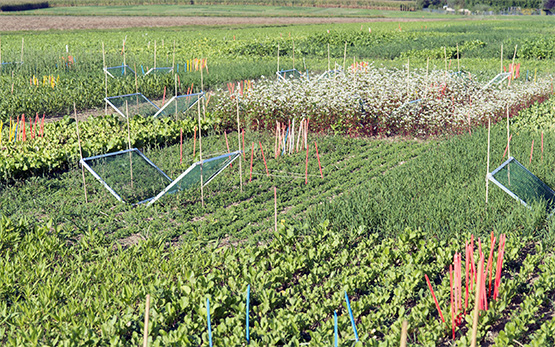Allelopathy is a natural phenomenon that can be defined as the totality of interactions between two organisms via compounds generally produced by their secondary metabolites and released into the environment.
Determining allelopathic potential
The strong weed-suppression effect observed in the presence of certain vegetation covers may be due to allelopathy. The aim of Agroscope research is to determine the allelopathic potential of vegetation covers, particularly that of buckwheat (Fagopyrum esculentum M.) compared to redroot amaranth (Amaranthus retroflexus L.), a weed frequently present in crops.
Selecting effective vegetation covers
By isolating factors linked to competition for resources (light, water, nutrients), it is possible to determine potential allelopathic effects. Identifying these effects may favour the selection of vegetation covers that are more effective at suppressing weeds in the field.
Identifying natural herbicides
Methods for extracting compounds that exhibit allelopathic properties allow the laboratory testing of the phytotoxic effects of these compounds on the germination and growth of weeds. The ultimate objective is to enable the identification of natural molecules with a herbicidal effect.






